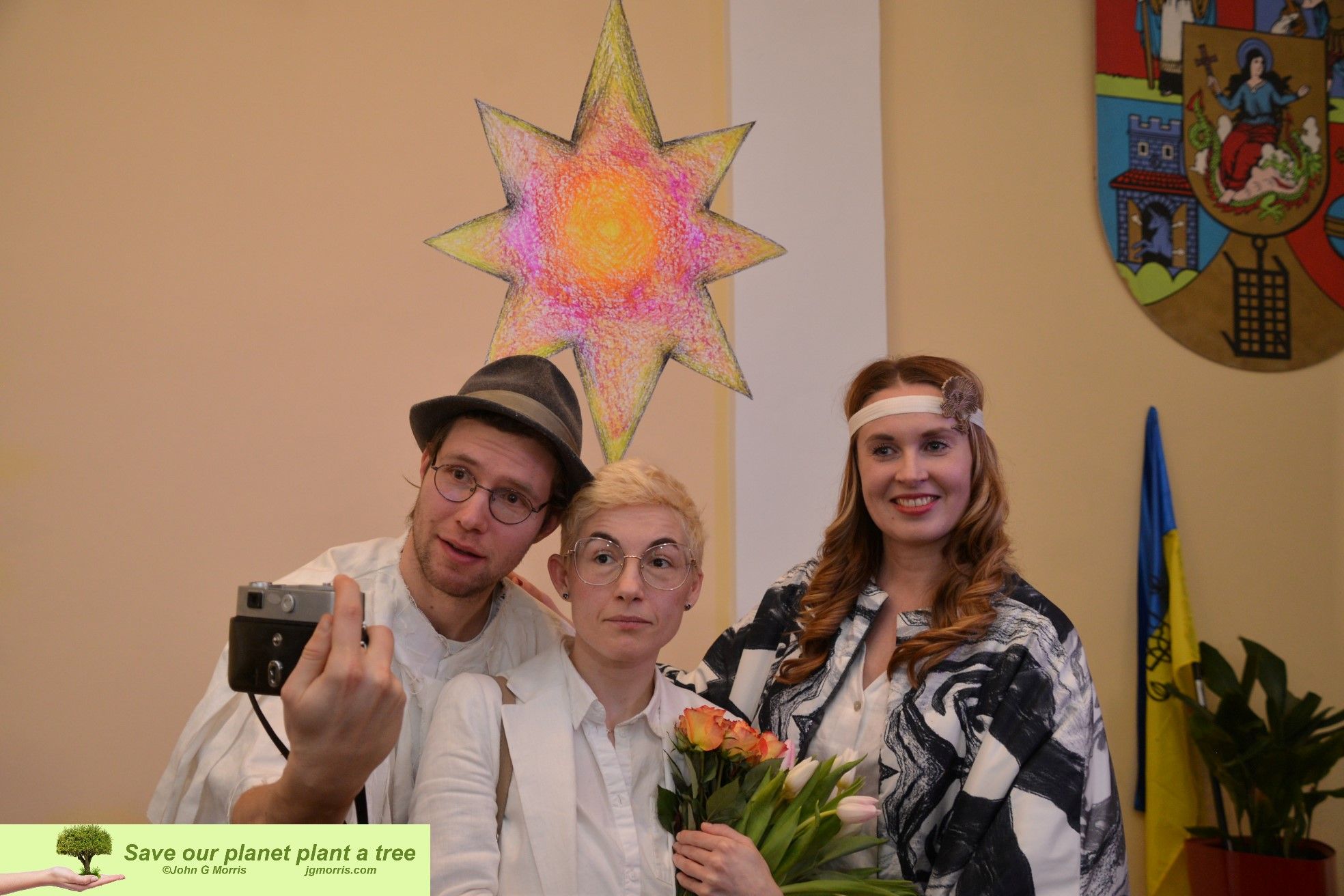Ukrainian vertep as a part of cultural diplomacy or how the world was shown a nativity scene about the Holodomor in Ukraine.
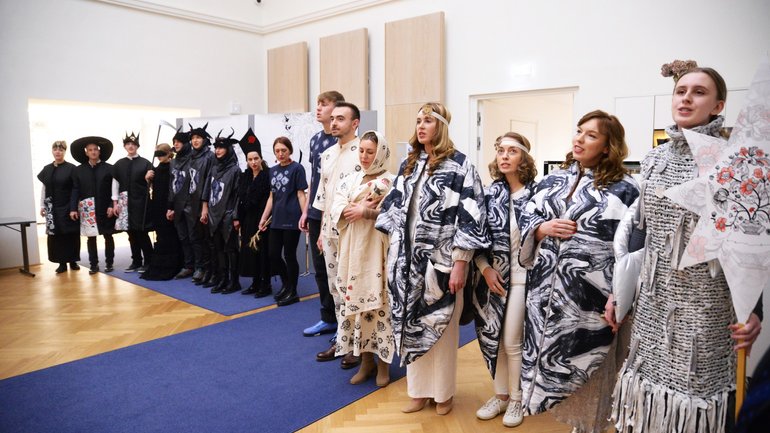
This is the nativity scene "Christmas with Gareth Jones" by Ukrainian Christmas plays creator Tetyana Shpaykher, which was shown in Vienna at the OSCE headquarters and in Vancouver, Canada. On the occasion of the end of this year's nativity scene and the Christmas cycle in general, RISU asked Tetyana Shpaykher to tell us more about this special nativity scene and summarize its results.
Vertep "Christmas with Gareth Jones" was written on the occasion of the 90th anniversary of the Holodomor victims' commemoration. According to the plot, on the 90th anniversary of the Holodomor, God, together with the Christmas angels, sends to Ukraine the British journalist Gareth Jones, who was the first to tell the world the truth about the Holodomor in Ukraine and paid for it with his life. The vertep was written at the request of Ukrainian youth from Vancouver and the artist Maria Sakvuk, who was in charge of its production in Canada.
Later, the idea of an English-language performance in Vienna was organized by art curator and artist Yana Hryniv. The American-Austrian writer Mark Klenk and Ukrainian artist Olha Zhminko translated the nativity scene into English. The Christmas play was directed by Kyiv-based director Yulia Mykhalska. Costumes for the Vienna production were provided by Gaeva, a Ukrainian brand of modern clothing with ethnic motifs.
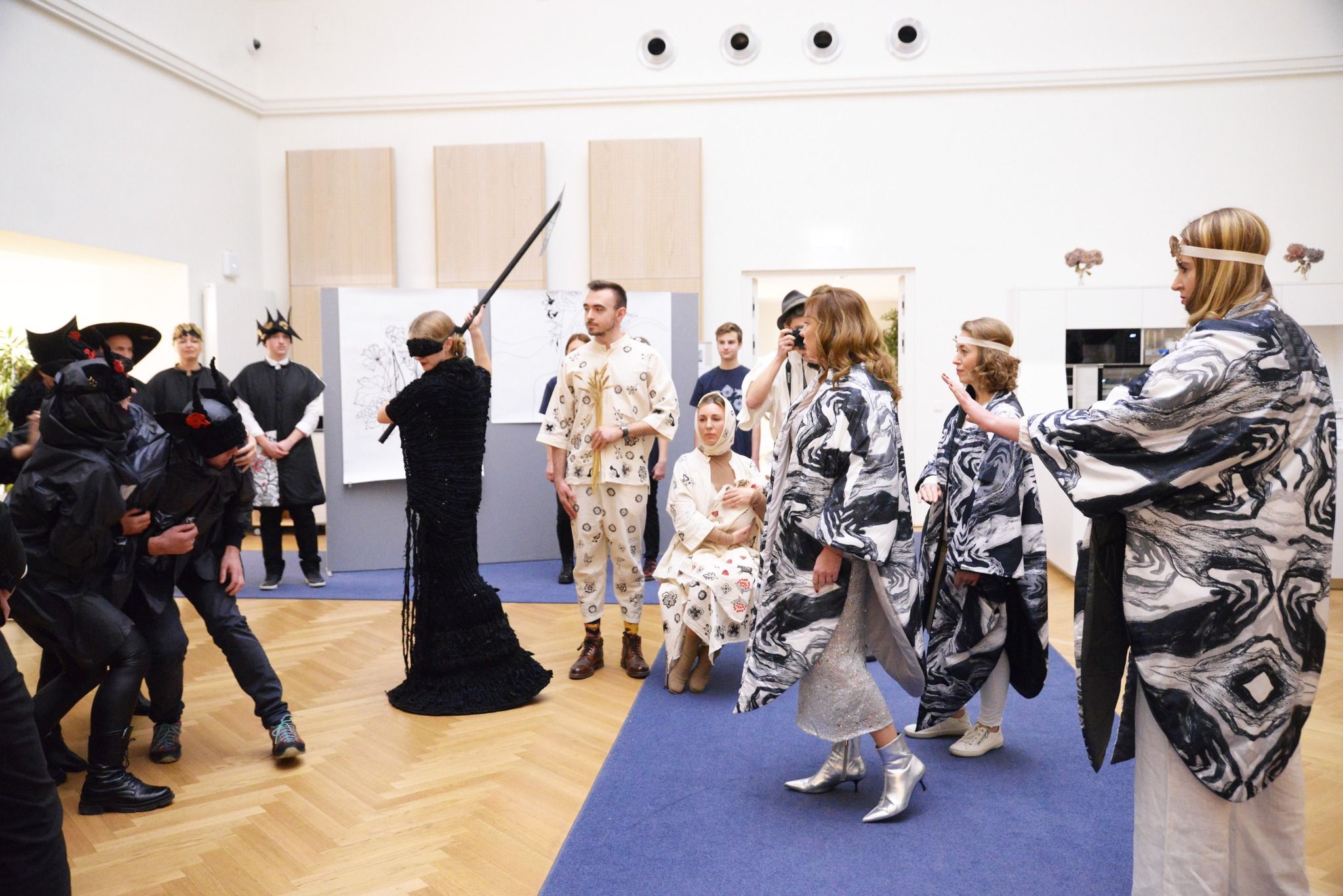
Two performances of the nativity scene took place in Vienna: On January 16, a private performance took place at the OSCE headquarters, attended by diplomats from 17 countries, and on January 22, an open performance took place at the Vienna Fifth District Magistrate's Office, attended by more than 150 people. Thus, this nativity scene has become an excellent example of cultural diplomacy, which again and again draws the world's attention to Ukraine, tells the story of Ukraine and shows Ukrainian culture through art that Europeans can understand.
Despite the fact that the story of the Holodomor is our most tragic page, the vertep shows the incredible strength of Ukrainians. When Gareth Jones travels to modern Ukraine in the story, he is sure that there is no one left alive, but he sees people who, despite mines and rockets, sow and reap, can feed themselves in wartime and send grain to countries where there is no war, but people are starving. In the 90 years since the Holodomor, Ukrainians have made one big conclusion: freedom equals physical survival, because in the 1930s, all the crops were taken away from enslaved Ukrainians and they died in millions, and today, defending freedom, they can feed themselves and others. And Gareth Jones admires the courage and bravery of Ukrainians.
Gareth Jones
It's so amazing,
What your people have done!
I thought that in this country,
There will be no one left,
Nobody and nothing,
Because almost everyone was killed.
Yet, you died,
And came back to life again and again,
Because your people rose again.
I remember Christmas,
But there was also a Resurrection,
Now I know for sure.
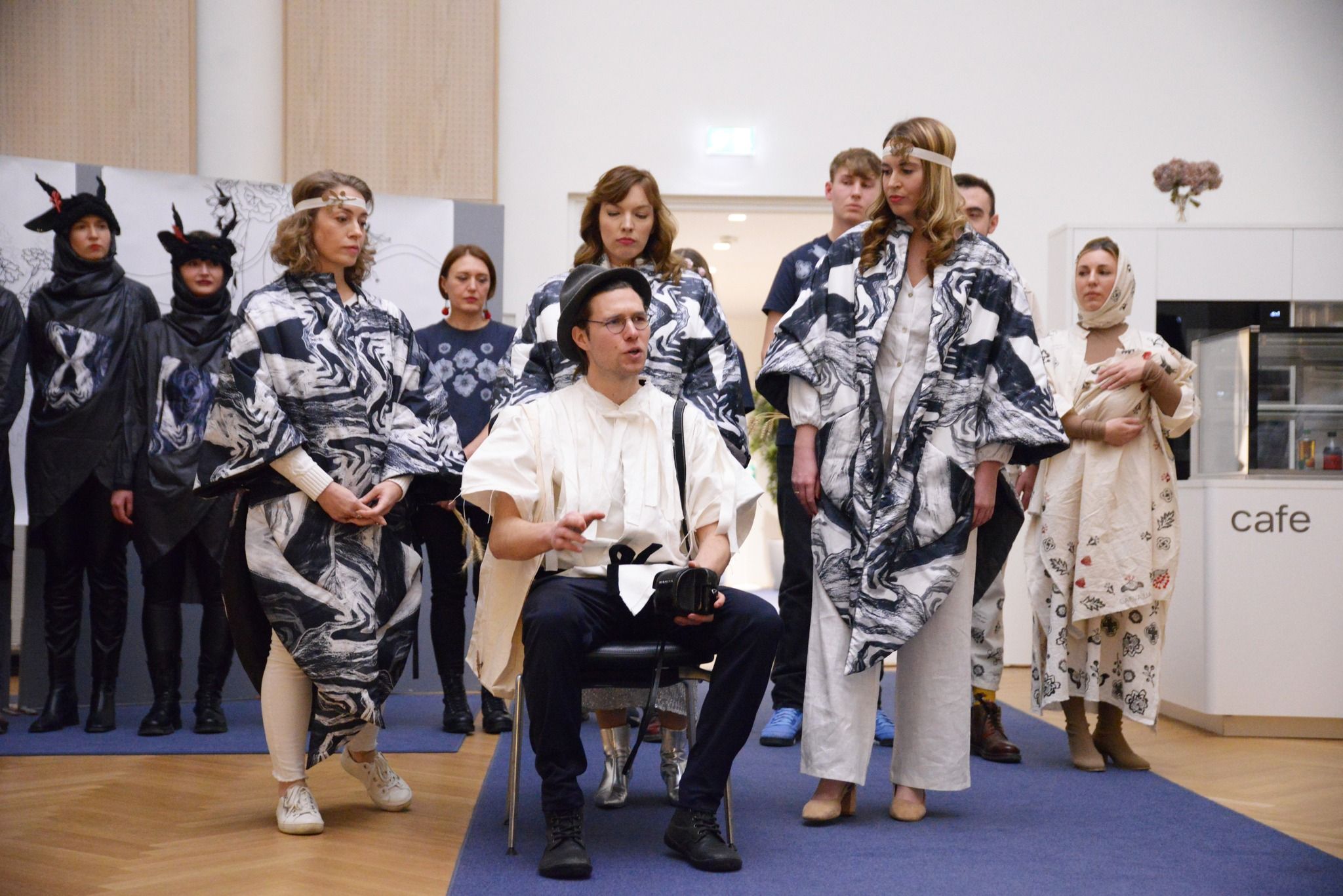
Representatives of nine Ukrainian organizations in Vienna, including Plast, Mriya, Ukrainian House Vienna, “Kryla Communication”, the Ukrainian Library at St. Barbara's Church, “Art-contact Ukraine” , and others, took part in this Christmas play. Among them were artists, journalists, economists, scientists, singers, and painters - that is, this nativity scene could be said to represent the entire Ukrainian community in Vienna, which came together to tell the truth about Ukraine in English.
The curator of the Vienna production was Yana Hryniv, who had previously organized several exhibitions in Vienna, including the exhibition "Grain: burning issue" about the destruction of Ukrainian grain during the current Russian war in Ukraine and the crimes of the Russians during the Holodomor. Yana organized rehearsals and performances, as well as other organizational issues.
The main character, Gareth Jones, was played by Andriy Karioti, the founder of the NGO Mriya. This organization has held dozens of actions in Vienna in support of Ukraine and against Russia in front of Austrian government and commercial buildings. Mriya also has a sports club for Ukrainians in Vienna. Although Andriy is not a professional actor, he played his role flawlessly.
"I believe that we should definitely perform this production in the main Viennese theaters. Thousands of people need to get a taste of beautiful authentic Ukrainian culture from real Ukrainians," says Andriy Karioti, sharing his impressions of the Nativity play.
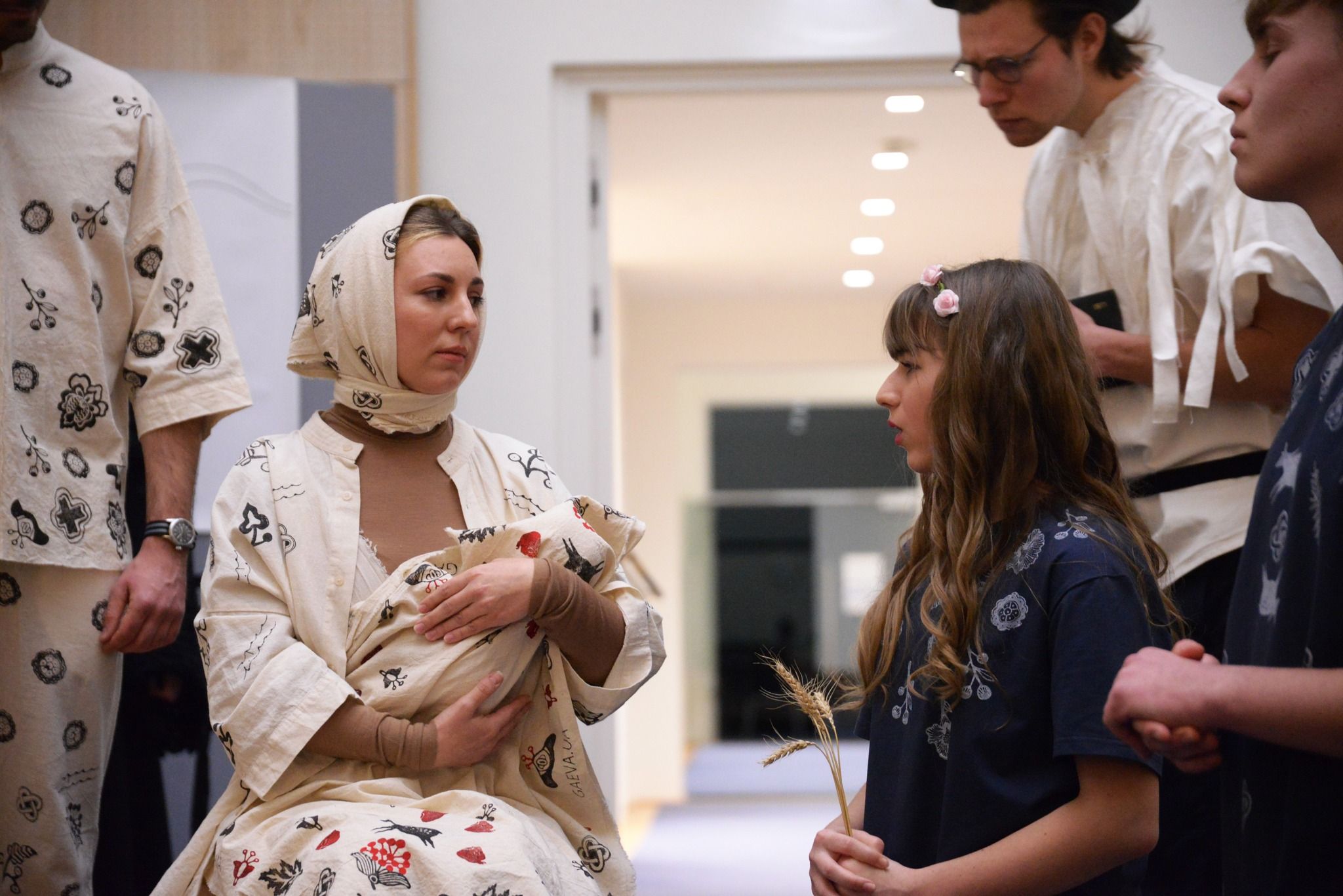
The Holy Family in the Nativity play was played by Ukrainian artist Helen Litorelle and economist and activist Andriy Yavorsky. Helen Litorelle is an artist from Kyiv who moved to Vienna during the war. Last year, the artist presented in Vienna her "War Diary from a Ukrainian Bunker". She sees participation in the vertep as a continuation of her mission to tell the world about the war in Ukraine.
"I am very pleased with this nativity scene, because we talked about Ukraine together with talented, creative, artistic and patriotic people. I played Mary and it seems to me that this archetype hit me in the heart, because I am also the mother of a little boy, whom I waited for many years, a miracle happened and he was born. It so happened that according to the Julian calendar I was born on the day when the church celebrates the Nativity of the Virgin Mary, and I think that this role was not accidental," the artist says.
Oksana Yavorska, director of the Ukrainian library in Vienna at St. Barbara's Church, played one of the demons in the nativity scene. In total, there are three devils in the drama. On the eve of the performance at the OSCE headquarters, Oksana's family suffered a tragedy - her grandmother died, and despite this, Oksana took part in the performance of the Nativity play, dedicating it to the deceased.
"Participation in this nativity play means a lot to me, because in this way I help to tell more about Ukraine to the international community, and it is also important to me because my grandmother, who died yesterday, used to play in an amateur theater and entertained people in the postwar years with this theater, because they had a very difficult life then. Now I have a slightly different goal, not to entertain people, but to tell the truth about the horrors and atrocities we suffered at the hands of the Russians. It's a great honor for me to be a part of this nativity scene, even in such a demonic role, but I did my best to convey what was written in the script and laid down in the nativity scene," Oksana said on the day of the performance.
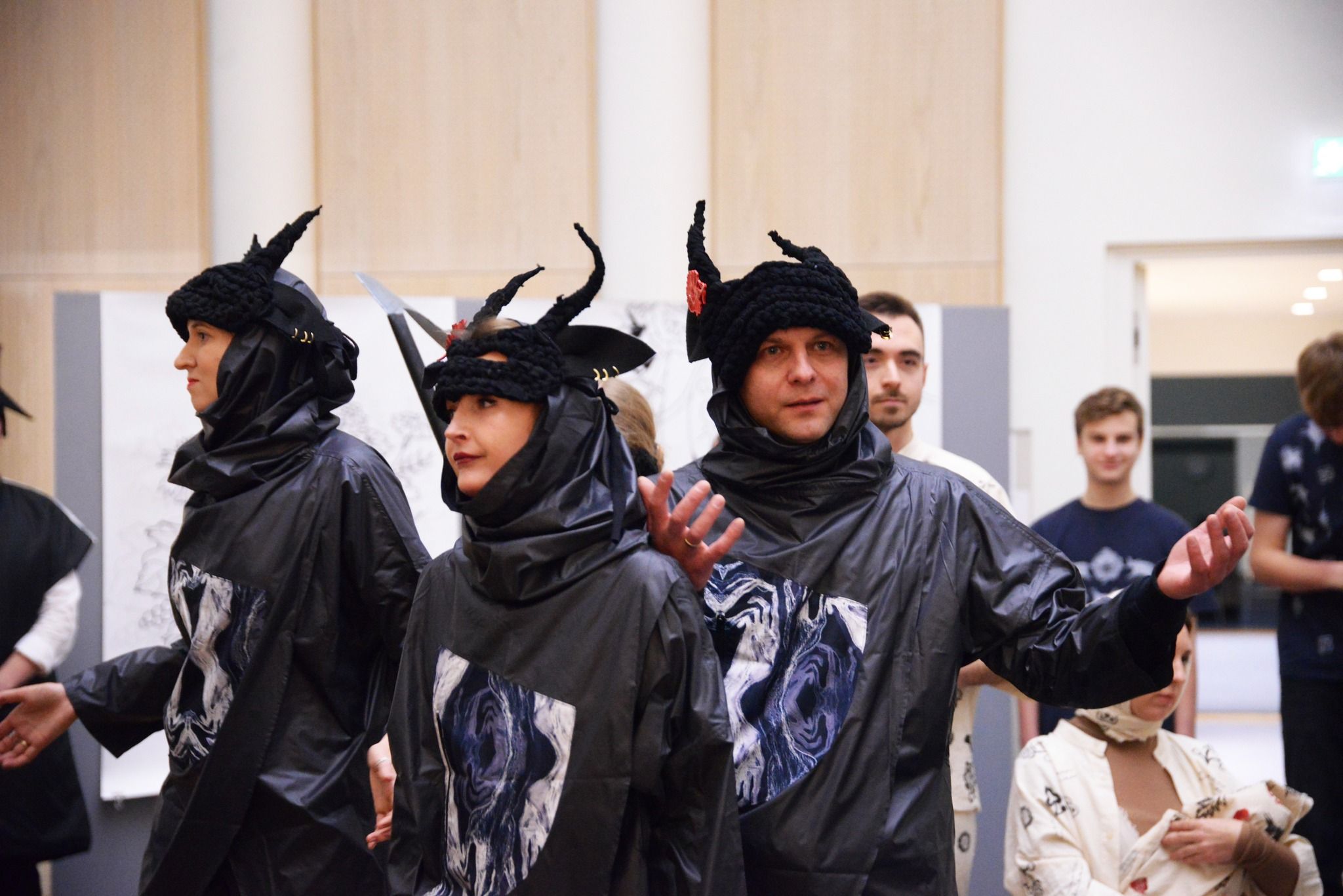
The other two devils were played by Vasyl Korotkyi, a journalist for Ukrinform in Vienna, and Iryna Yeremenko, founder of Ukrainian House Vienna. According to Iryna, participating in the nativity scene introduced her to some incredible people.
"During the whole process, the atmosphere was just incredible, and when we were performing, I wanted to cry myself. I was from the "evil group", I heard the words of the Ukrainian mother and the Virgin Mary, and my eyes were full of tears, but I told myself: you are evil, get yourself together, get yourself together, you are evil, you have to play your part. I am very grateful for this wonderful script, thanks to which we have fulfilled an important mission. At Ukrainian House Vienna, we are engaged in telling about Ukrainian business, Ukrainian NGOs and events that Ukrainians do, and we show that Ukrainians do well, and that we are worthy of being part of the European Union. And this nativity scene is a great proof that Ukrainian projects are the best," Iryna Yeremenko is sure.
Herod was played by Elena Umlauff, a researcher at the University of Vienna. Her project called "Urbanism in the Works of the Stanislav Phenomenon´s Authors in the Context of the Austrian Era" deals with urban motifs in the works of contemporary Ukrainian writers who used the memory about the historical city of Ivano-Frankivsk from the Habsburg period to create new forms of identity in post-Soviet of Ukraine.
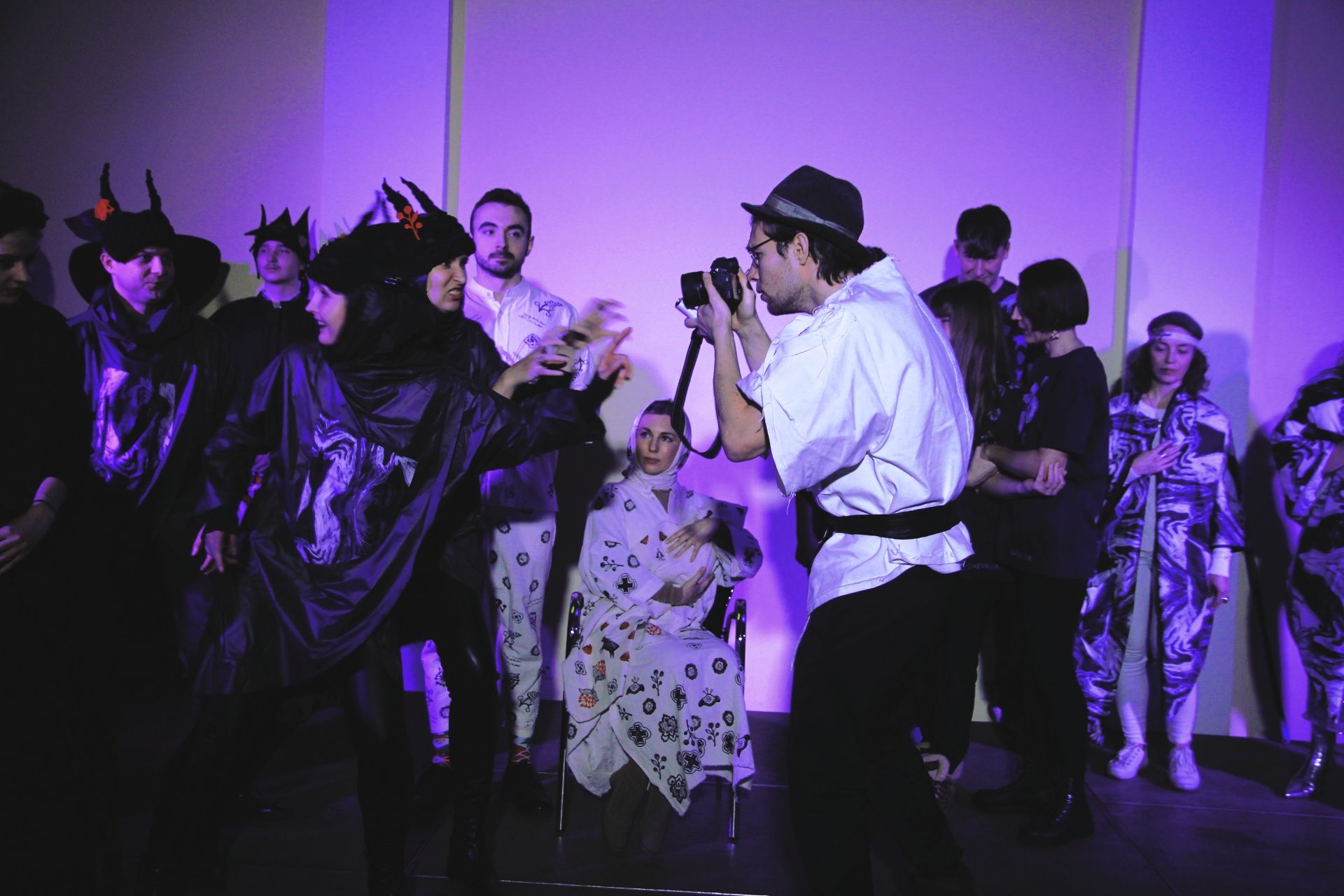
"I believe that nowadays the Ukrainian voice should be heard in the world, and one of the ways this can happen is through cultural diplomacy. Our nativity scene has such a huge honorable role and an honorable mission to tell other countries and international organizations about our culture, our history, our traditions, and this incredible combination of historical events with Gareth Jones and Ukrainian folklore. It's a great opportunity to show a part of our Ukrainian history and our beautiful traditions," said Umlauff.
American-Austrian writer and vertep translator Mark Klenk voiced the voice of God the Father in the nativity scene and played the volunteer king who, together with the Ukrainian warrior king and the physician king, come to worship Jesus at the end of the nativity scene. Mark, as a poet, has written many poems on religious themes and often uses biblical stories, so it was interesting and natural for him to work with the nativity scene.
"This Christmas play showed all my passion for Ukraine, which I love to support. It was truly incredible for me to participate in it, to translate it and even to play a role, to be part of this performance. I am very happy that Ukrainians have accepted me into their community. It is amazing" the writer shares his impressions.
In vertep also took part singer Kateryna Sihaieva-Kopylova and Danylo Tsikhotskyi as kings, artist Olha Zhminko, journalist Alla Stashchenko and artist Iryna Romanishin as angels, and Miriam and Oksana Schocher, Oles Vodotyka and Ivan Kopylov as Ukrainian families, star - Mishel Kramar and Anna Miller as a death. The performance ended with "Shchedryk," sung by Artem Pachez, as well as Olha, Olena, and Hanna Vyshnevsky.
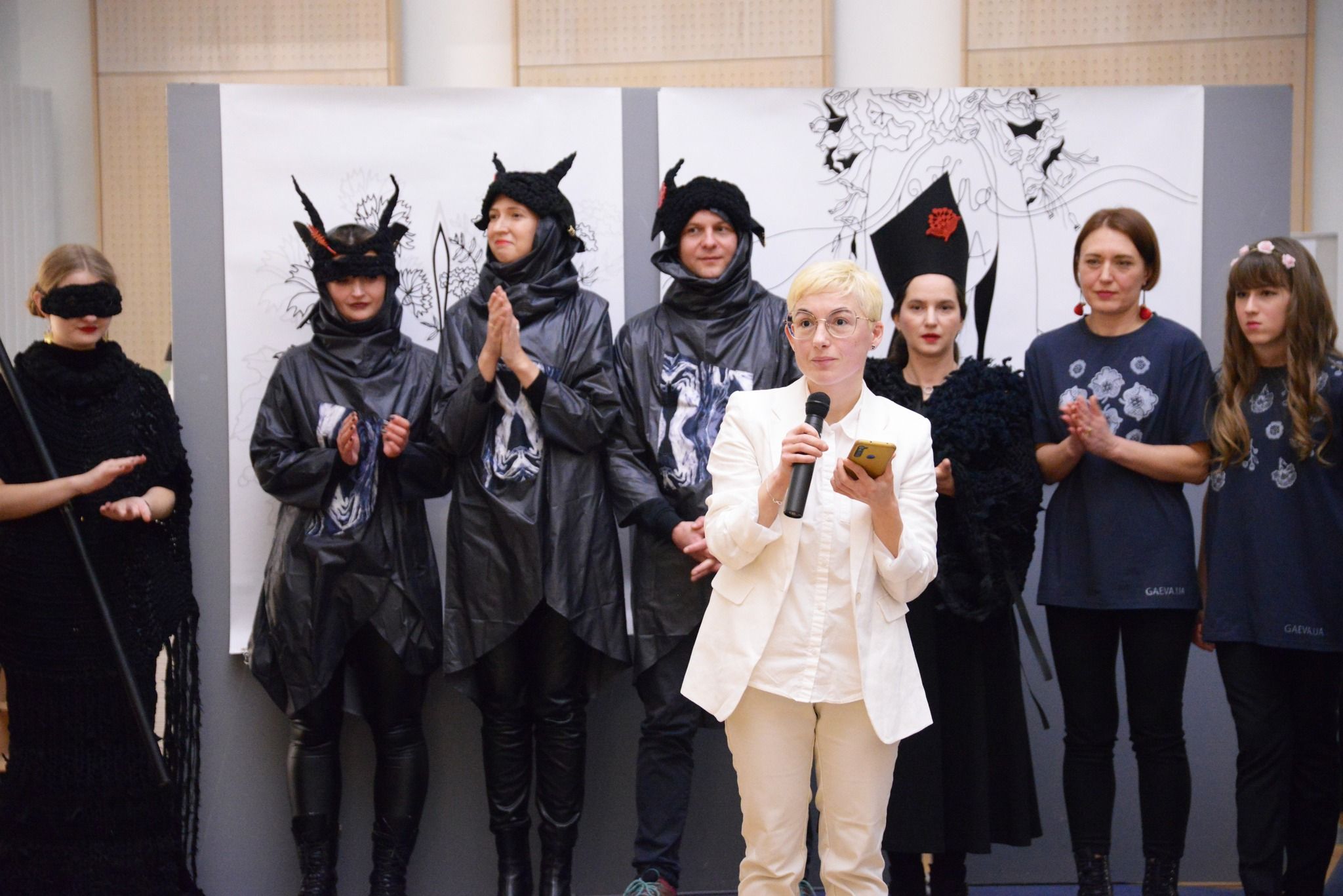
As the author of this play, I was present at all rehearsals, helping to better understand each of the roles. And I spoke as the author after each performance. My speech was always very short. I addressed the audience with the words that, unfortunately, we cannot change what happened in Ukraine 90 years ago, but we can change what is happening in Ukraine today, and we all, Ukrainians and the international community, must make every effort together to change it. The world should not just watch Ukrainians being killed again. There is much more information about what is happening in Ukraine now than there was during the Holodomor.
The last part of the project is to be a presentation of a documentary about the entire Vertep project, which will be presented by a Ukrainian journalist Alla Stashchenko and her agency “Kryla Communication”. Alla worked as a journalist in Ukraine for 15 years and moved to Vienna after the outbreak of the war, where she has been actively shown in her work about the events in Ukraine.
However, the project will not end there. The vertep "Christmas with Gareth Jones" is already being translated into Spanish, Polish and German to be shown in many other countries next year, and we are talking about a large foreign audience, English-speaking, Spanish-speaking, German-speaking. This year, a collection of my nativity scenes will also be published, and this is a topic for a separate text.
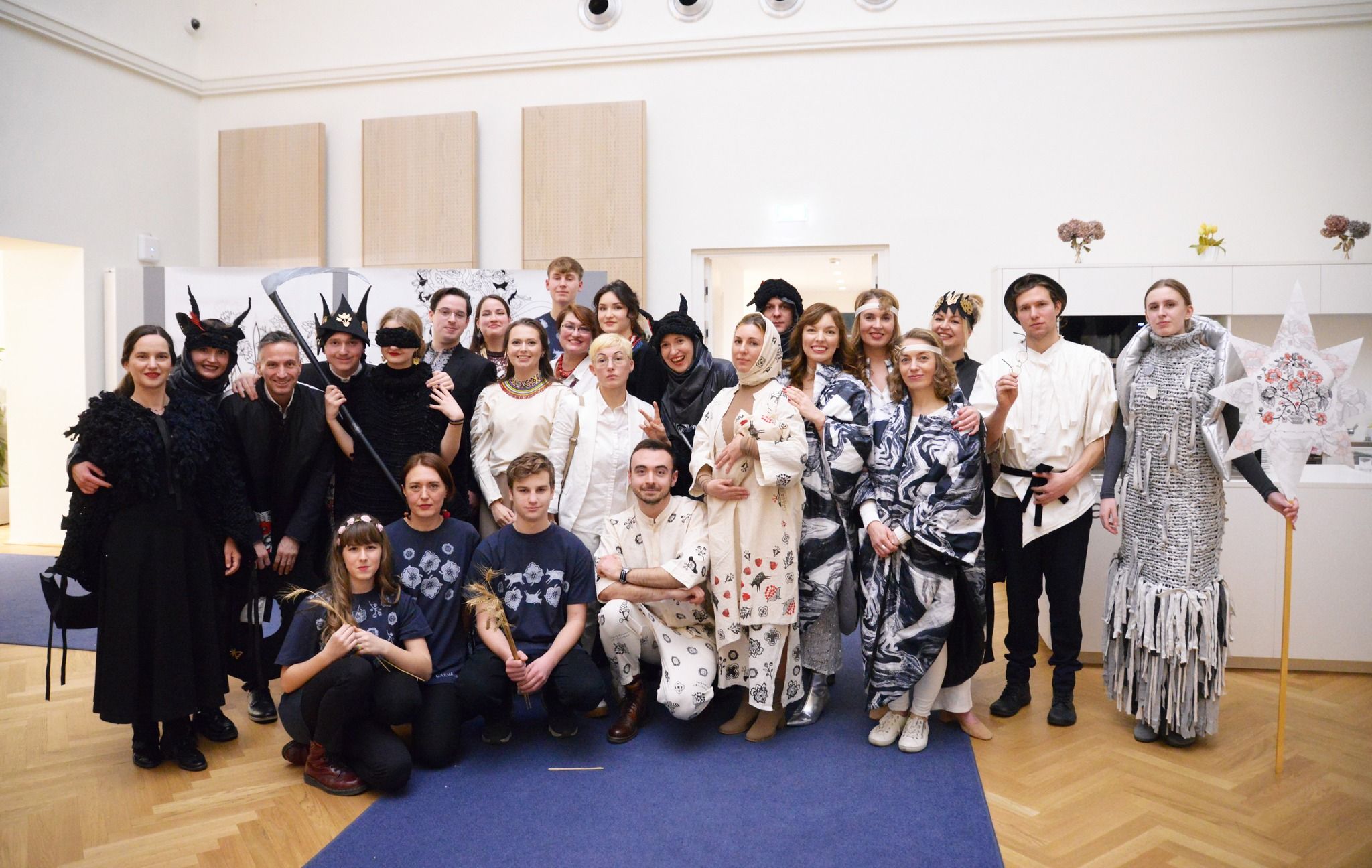
In conclusion, I will share a few thoughts.
- The contemporary Ukrainian vertep is very traditional.
I've been writing nativity scenes for ten years now and I'm constantly studying it in depth as a phenomenon. Every year it becomes more and more obvious that the more modern a nativity scene is, the more it is painted in the spirit of Ukrainian nativity traditions. Probably, when people today see vertep that tells, for example, about the war, and before that about covid, or about the Revolution of Dignity before that, not everyone sees such nativity scenes as traditional, or rather similar to those they saw, for example, in the 1990s. In fact, we are talking about 300 years, that is, many generations. And according to research, including a major fundamental study by Ivan Franko, all this time, the Ukrainian nativity scene has been telling the story of the birth of Jesus Christ in the context of the socio-political realities in which the people who staged it lived. There could be up to 40 characters in the Ukrainian vertep, but only a small number of them were constant: The Holy Family, the three kings, Herod, angels, and shepherds. All the other characters were representatives of professions and nationalities that were relevant at the time and lived alongside Ukrainians. In other words, the traditional Ukrainian nativity scene is always modern, it always tells about the birth of God among Ukrainians and mainly in Ukraine.
- The Ukrainian vertep is constantly changing, yet remains unchanged
In the Ukrainian nativity scene, the problems or political circumstances that people mentioned during the nativity drama have changed every time: "yesterday" in the Ukrainian nativity scene, Polish or Hungarian soldiers came to Jesus, but today it is Ukrainian soldiers from Donbas or Zaporizhzhia; "yesterday" Herod, in addition to his traditional role, personified a politician, but today he personifies an aggressor; shepherds were dressed in different clothes depending on the era. The carols sung during thevertep also changed. Only the story of the birth of Christ remains unchanged.
- The Ukrainian vertep always tells the Ukrainian story
Every Ukrainian nativity scene is a part of our history and culture and tells the Ukrainian story. Every Ukrainian nativity scene tells the story of the people who wrote it and performed it in their time. The vertep tells the story of the development of the Ukrainian language, the history of the development of Ukrainian drama, including Christmas play. The Ukrainian nativity scene tells the story of our Christmas puppet theater, because that's how it once began, and the nativity scene in the form of street theater, which we are used to now, did not appear immediately. Once upon a time, one or more nativity scene performers would carry a portable two-tiered shopka (puppet theater) with dolls on the top tier, with the Holy Family, angels, and other heavenly characters, and representatives of the society of the time on the bottom tier. All these nativity scenes that have survived to this day are part of our history. And today, by writing nativity scenes and performing them, by developing the Ukrainian vertep, we are making history.
- Ukrainian vertep helps Ukraine not only with telling stories but also with money
This year, all over Ukraine and abroad, people who set up nativity scenes raised funds to help Ukraine. It is impossible to calculate the amount they raised, but it was definitely significant. This year, in addition to the Holodomor nativity scene, I wrote several other nativity scenes that were staged by different communities in Canada, Poland, and Ukraine, and each of them received a script from me on the condition that at least part of the funds raised would be donated to help Ukraine. These communities raised very different amounts, and some of them were very substantial. I am sure that within Ukraine or even the world, we are talking about a lot of money to help our country.
